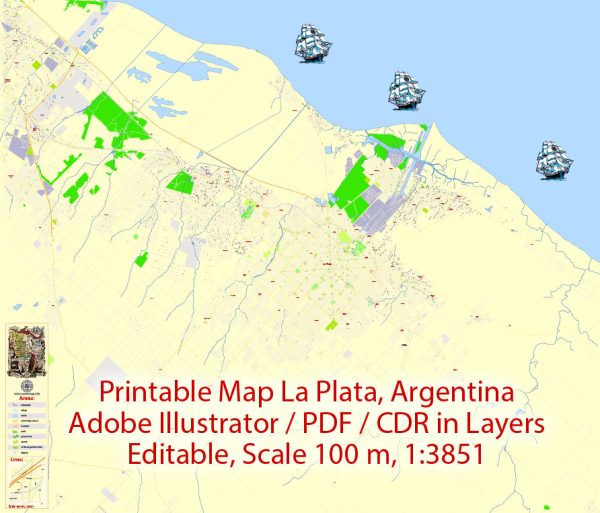La Plata, the capital city of the Buenos Aires Province in Argentina, has a rich history of urban development. The city was planned and built to be the provincial capital in the late 19th century, and its design reflects the ideals of the time.
- Founding and Planning (1882): La Plata was founded in 1882 by Governor Dardo Rocha during a period known as the “Generation of 1880,” which marked a turning point in Argentine history. The city was strategically located to serve as the provincial capital, replacing the city of Buenos Aires, which had become the federal capital. The design of the city was heavily influenced by the ideas of French urban planner Charles Thays and architect Pedro Benoit.
- Architectural Style and Layout: The city’s layout is characterized by a strict grid pattern, with wide avenues and geometrically planned squares. The design is reminiscent of other planned cities of the time, such as Washington, D.C. and Paris. The main square, Plaza Moreno, is surrounded by important public buildings, including the Cathedral and the City Hall.
- Cultural and Educational Institutions: La Plata was conceived as an intellectual and cultural hub. The city is home to important educational institutions such as the National University of La Plata (UNLP), which was founded in 1905. The university has played a crucial role in the city’s development and continues to be a major influence.
- Historical Buildings: The city boasts numerous historical buildings, many of which were constructed in the late 19th and early 20th centuries. The Teatro Argentino, an opera house inaugurated in 1890, is a notable example of the architectural and cultural richness of the city.
- Transportation and Infrastructure: La Plata was also designed with modern infrastructure for its time. The city’s wide avenues and boulevards accommodate the flow of traffic, and the transportation system has evolved to include buses and trams. The city’s railway station, Estación La Plata, connects it to Buenos Aires and other parts of the region.
- Demographic Growth: Over the years, La Plata has experienced demographic growth and urban expansion. While the original plan of the city remains intact in the central area, the outskirts have developed with a mix of residential, commercial, and industrial zones.
- Cultural and Social Life: La Plata has a vibrant cultural and social scene. The city hosts numerous events, festivals, and cultural activities throughout the year. The presence of the university contributes to a diverse and dynamic population.
In summary, La Plata’s history of urban development reflects the ideals of the late 19th century, with a planned layout, cultural emphasis, and educational prominence. The city continues to evolve while preserving its historical and architectural heritage.


 Author: Kirill Shrayber, Ph.D.
Author: Kirill Shrayber, Ph.D.